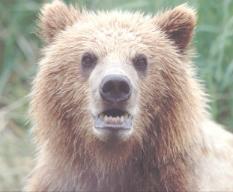The role of the bear has always been prominent in American Indian initiation and healing ceremonies, in shamanic rites, in the quest for guardian spirits, and in many dances.

This photo is of a Bear Ceremony by northern Paiute people taken in 1967 at Jamestown, California.
All across North America, Indians have honored bears. When hunting tribes killed one, they spoke to its spirit asking it for forgiveness. They treated the carcass reverently. Among these tribes the ritual for a slain bear was more elaborate than that for any other animal. Bears were both feared and respected. They were famous for their fierce maternal devotion. They ate many of the same foods as the Native Americans. Because the Indian identified with the bear in many ways, they imitated it in their rituals.
Archival slide courtesy of: Adan E. Treganza Anthropology Museum, Dept of Anthropology San Francisco State University. Reference: “Giving Voice To Bear” by David Rockwell, Roberts Rinehart 1991.














